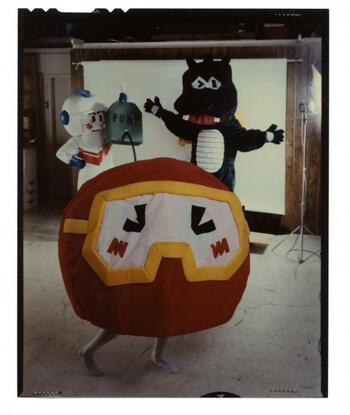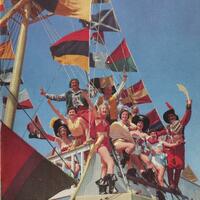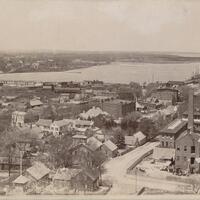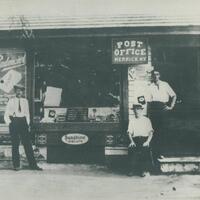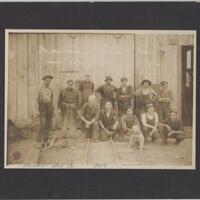Nolan Bushnell grew up in a small town near Salt Lake City, Utah. As a teenager, he repaired television sets while also working at his dad’s cement contracting business. Bushnell was first exposed to computer games when he attended the University of Utah as a computer graphics student. While there, he, like other computer engineering students, played math and simple video games on large and expensive mainframe computers. Bushnell also worked a part-time job at an amusement park arcade,
where he became familiar with coin-op electro-mechanical games. After college, Bushnell combined his knowledge of computers, televisions, and coin-op games to make the first commercial video game, Computer Space. Computer Space was based on the MIT space game Spacewar!, and Bushnell licensed it to Nutting Associates. Although it was the first commercial video game, Computer Space failed to generate much excitement and fanfare. Believing that he could do better on his own, Bushnell, along with his business partner Ted Dabney, founded Syzygy; when they were informed that the name was taken, they changed it to Atari, Inc. Once Atari was officially founded in 1972, Bushnell and Dabney hired engineer Al Alcorn to design a table-like ping pong game. The result was Pong—a simple tennis-like game featuring two parallel bars and a moving dot—which ultimately transformed the video game industry.
Following Pong, the company continued to experience tremendous success. Along with Pong sequels (Doubles Pong, Super Pong, Quadrapong, and other variations), there were other subsequent hits including: Gran Trak 10, Tank, Crash ‘N Score, Breakout (a game that was famously designed by Steve Jobs and Steve Wozniak—though their design, too complicated for mass production, was not used in the final product), Night Driver, Subs, Le Mans, and Fire Truck. In 1975, Atari created a home version
of Pong (appropriately called Home Pong), which was marketed exclusively at Sears and quickly sold 150,000 units under the Sears’ Tele-Games label. Two years later, Atari released another consumer product, the Video Computer System (later renamed the Atari 2600), a game system that used video game cartridges. Despite its massive success, the development costs were immense. Bushnell, looking to offset costs to an established company, sold Atari to Warner Communications in 1976 for $28 million
(Dabney had left the company a year after it was founded). In 1978, Bushnell left the company he cofounded after several disagreements with Warner.
By the early 1980s, smash hits such as Asteroids, Battlezone, Missile Command, Centipede, Tempest, and Star Wars attracted millions of teenagers and young adults into arcades, and firmly established the coin-op division of Atari as the premier arcade manufacturer. Despite these successes, dark times lay ahead. Beginning in 1983, the video game industry experienced a sharp decline. Atari, as the largest video game producer at the time, began to rapidly lose money. Warner, desperate to unload a
potentially unstable liability, explored options to sell the floundering company. In 1984, Jack Tramiel, the former head of Commodore, acquired the home and computer division of Atari from Warner, renaming the company Atari Corporation. Soon after, Warner sold its 60% majority share of the coin-op division to Namco. Namco subsequently renamed the arcade division Atari Games. (Warner, operating under the name Time Warner Interactive, would eventually buy back the majority share of Atari Games.)
Operating as Atari Games, the coin-op division had moderate success with games such as Paperboy, Indiana Jones: Temple of Doom, Road Runner, Gauntlet, Road Blasters, 720°, Toobin’, and Hard Drivin’. Yet, as competition intensified throughout the late '80s and early '90s, Atari Games struggled to compete. As the 1990s progressed, Atari Games produced far fewer successful games and experienced several setbacks. In 1996, Time Warner Interactive, parent company of Atari Games, sold
the company to WMS Industries. WMS Industries renamed Atari Games as Midway Games West to avoid confusion with another subsidiary. In 2003 Midway liquidated Midway Games West’s assets, effectively shutting down the last remnants of Atari Games.
